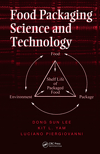Consumers are becoming increasingly concerned about food safety. They’re also engaging more frequently with retailers and food companies about the safety of food packaging. Adhesives must have pre-market clearance if they are to be used in food packaging. Pre-market clearance typically involves using materials in adhesives that are listed in Title 21 of the Code of Federal Regulations.
The Food and Drug Administration also allows the use of materials in adhesives which are generally recognized as safe as demonstrated by published toxicological data, materials for which the FDA has granted prior sanction (pre-1958), and materials which are not expected to become a component of the diet. Additionally, a company may ask the FDA to review new adhesives under its Food Contact Notification Program. If the components of an adhesive do not meet the pre-market requirement(s) listed above and they migrate into the food contained in the packaging, FDA considers the food to be adulterated.
Determining what is safe and fit for use in food packaging can be very difficult for most adhesive suppliers. In the European Union, the legislation for some types of food packaging (e.g., plastics under the Plastics Implementing Measure) is harmonized among the EU member states. Unfortunately, the legislation for adhesives is not harmonized and obtaining a suitable clearance for an adhesive can be more challenging and may be subject to the requirements of the individual member states. However, the Framework Regulation governs all materials and articles that come into contact with food. Article 3 of the Framework Regulation requires that materials and articles that come into contact with food be manufactured in accordance with good manufacturing practices and must not transfer constituents to the food that can endanger human health, change the composition of the food, or deteriorate the organoleptic (taste/smell) properties of the food.
Companies can face challenges obtaining approval for a product in the US if it doesn’t have pre-market clearance or in the EU where adhesive legislation isn’t harmonized. Many adhesive companies rely on the use of a functional barrier, i.e., a barrier (usually a polymeric film) that prevents migration, and assume that the amount of a substance without pre-market clearance migrating into the food is negligible. Unfortunately, barrier properties vary widely between substances and migration is affected by many factors such as the type of food and temperature and shelf-life of the package. Also, as the toxicity of the potential migrant increases, the migrant level that is allowed to enter the food decreases. Therefore, for components with high toxicity, such as a carcinogen, mutagen, or reproductive toxin, a food packaging supplier should be absolutely certain that their barrier is indeed functional.
Rather than hoping the barrier in a package is functional, a better approach is to determine if your package is fit for its intended use. A fit-for-use determination requires an understanding of: 1) the components used in your formulation 2) the end-use profile of your product, 3) the migration profile of your product based on your customers’ end-uses, and 4) a risk assessment of the migrants.
To determine the potential for migration, it is critical that the adhesive supplier understands the end-use of their material. Critical to this understanding is the packaging structure itself. The safety of the adhesive depends on the type of barrier film used in the packaging structure. Films have very different barrier properties depending on thickness, temperature, and food type. The barrier properties generally increase for these types of films: linear low density polyethylene (LLDPE); high density polyethylene (HDPE); polypropylene (PP); polyester terephthalate (PET). Probably the most frequently used barrier film is LLDPE, but it can be a poor barrier under certain conditions.
Time, temperature and food type are also critical in understanding how end-use affects migration. As the temperature increases, so does migration. Likewise, the longer a food sits in the package on the shelf, the more migration will occur. The type of food in the package also can profoundly affect the migration of chemical substances; in general, fatty foods enhance migration of chemical substances. The FDA1 and EU2 have published standards concerning appropriate temperature and time conditions in which they also recommend the appropriate food simulant for suppliers that undertake migration testing. Companies should consult these sources when performing migration testing to reduce the risk of underestimating migration.
In designing a migration experiment or performing diffusion calculations, a supplier must determine which chemicals are likely to migrate, the hazards of those materials and determine an appropriate detection limit based on those hazards and potential exposure. In Europe, there are detection limits in the PIM for some chemical migrants. These are known as specific migration limits. The FDA does not publish SMLs, so the flexible packaging manufacturer and supplier must rely on risk-based approaches to determine if a product is safe (i.e., hazard of the material is evaluated, the exposure to that material is determined, and risk is evaluated). In the EU, a similar risk-based approach may be used to establish detection limits if an existing SML is not available. If your migration results are below the determined detection limit for the appropriate conditions of use, you can conclude that your product is fit for use.
Ashland Inc.
www.ashland.com




